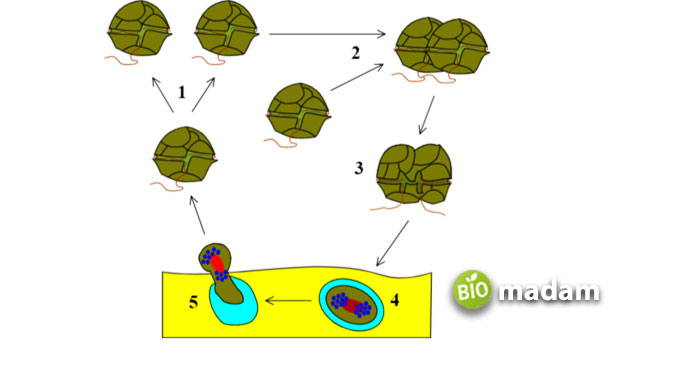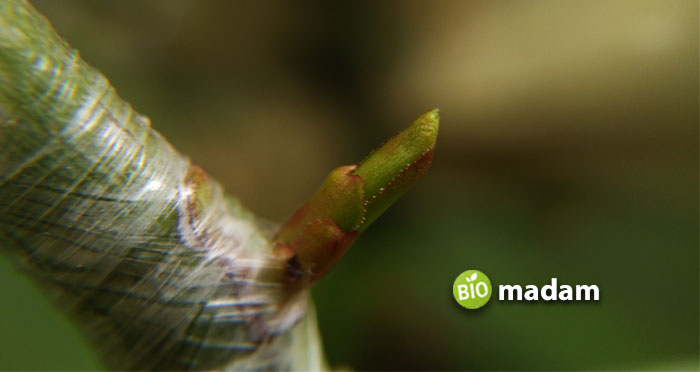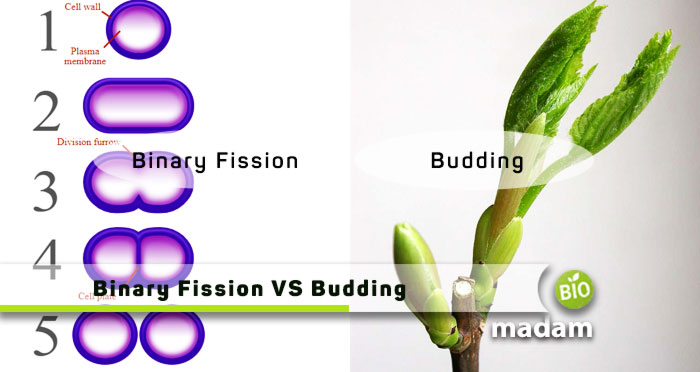Prokaryotes and eukaryotes utilize sexual or asexual reproduction methods to reproduce and multiply. Prokaryotes widely reproduce through asexual reproduction. On the other hand, eukaryotic cells typically follow sexual reproduction. Fragmentation, binary fission and budding are the most common reproductive methods among prokaryotes. Some multicellular organisms also exhibit budding. We will talk about the main difference between binary fission and budding and how the parent cells produce daughter cells. In binary fission, the cell splits into two while budding gives rise to daughter cells through extensions. Keep reading to learn more.
Keep reading to learn all the differences between binary fission and budding.
Comparison Table
| Characteristics | Binary Fission | Budding |
| Definition | Breaks into two | Reproduction by outgrowth |
| Division Type | Symmetrical | Unsymmetrical |
| Parent Identity | Lost | Present |
| Type of Process | Natural | Natural & Artificial |
| Number of Daughter Cells | Two | One |
| Outgrowth | Absent | Present |
| Example | Bacteria and archaea | Flatworms, jellyfish, yeasts and bacteria |
What is Binary Fission?
Binary fission refers to producing two daughter cells from a single organism. Binary fission is common in prokaryotes like archaea and bacteria. You might be surprised to know that cell organelles also exhibit binary fission. Mitochondria are among the organelles in livings that multiply through this process.
Binary Fission Process
- The process of binary fission starts with the uncoiling of DNA and chromosomes within the bacterial nucleus.
- As the chromosomes uncoil, they make space for special types of proteins that help replication and transcription.
- The DNA replicates and moves to the opposite poles in the cell for division into daughter cells.
- The cell expands while plasmids and ribosomes multiply within the cell.
- Eventually, the cleavage furrow helps separate the cell membrane, forming a cell wall between the two cells. It results in the separation of the cytoplasm of bacterial cells. This process is known as cytokinesis.
- Two cells are formed from one cell. They contain equal cytoplasm and other organelles.

The process of binary fission is categorized into three types based on the method of duplication and division.
Transverse Binary Fission: Transverse binary fission refers to the division of cytoplasm along the transverse axis to give rise to two cells. This type of binary fission is common in Paramecium.
Longitudinal Binary Fission: The division of cytoplasm in the cell along the longitudinal axis gives rise to longitudinal binary fission.
Irregular Binary Fission: Organisms like amoeba exhibit irregular binary fission by dividing in a plane perpendicular to karyokinesis.
Binary Fission Example
Binary fission in organelles is lesser known as eukaryotic cells and typically multiplies through mitosis and meiosis. Many organelles in eukaryotic cells have their own DNA and replicate through binary fission. Mitochondria are the most common example of reproduction through binary fission within the cell.
Binary fission is also the major reproductive method in bacteria as it is quick and allows them to multiply quickly. Bacterial species like E. coli divide every 20 minutes at 37 °C. It enables bacteria to grow and form a colony quickly.
What is Budding?
Budding is another type of asexual reproduction in cells that do not require oogenesis or spermatogenesis. An outgrowth or bud forms on the exterior of the organism that has the capability to develop into an individual. Budding occurs through somatic cells instead of sex cells as it divides the cell mitotically. However, this process is not only restricted to reproduction. It is used in different branches of biology in specific roles. Budding in embryology is the formation of structures from preexisting parts during differentiation. Alternatively, some viruses form buds as they take some part of the host cell membrane on their exit. This membrane becomes the outer membrane or bud of the virus.
Budding Process
Budding is a simple process like binary fission and does not require the involvement of gametes. However, it differs from other prokaryotic asexual reproduction processes. Budding results in the formation of a new cell from an old cell without the division of the parent cell into two.
- A bud or outward growth forms on the outer side of the old cell.
- The outer growth begins to mature and fall off the parent cell.
- The new cells are typically smaller than the old ones and grow gradually.
Some fungi and mold also follow this method of asexual reproduction to give rise to new organisms.

Budding Example
Budding is a prevalent reproduction method in corals, sponges, flatworms, sea anemones, jellyfish, yeast, and bacteria. It is also common for natural vegetative reproduction in plants. Budding is used artificially to propagate some plant species. One plant is grafted into another plant intentionally to help them propagate. This technique is widely used to grow rose plants.
Similarities between Binary Fission and Budding
- Binary fission and budding are types of asexual reproduction.
- They are fast processes and allow organisms to multiply more quicker.
- Both processes make use of cytokinesis and mitosis for division.
Differences between Binary Fission and Budding
Definition
Binary Fission
Binary fission refers to the division of a single organism or organelle into two by splitting.
Budding
Budding is the multiplication of cells or organisms by forming a bud or outgrowth on the parent.
Type of Division
Binary Fission
Binary fission is a symmetric process with equal division among both cells.
Budding
Meanwhile, budding is an irregular, asymmetric form of asexual reproduction.
Parent Identity
Binary Fission
The parent cell divides into two and loses its identity.
Budding
However, the daughter organism develops as an individual, and the parent does not lose its identity.
Type of Process
Binary Fission
Binary fission is a natural process that cannot be done artificially.
Budding
Meanwhile, budding is used in horticulture and botany to help propagate plants.
Number of Daughter Cells
Binary Fission
Binary fission produces two daughter cells on division.
Budding
Contrarily, one daughter cell is produced as a result of budding.
Size of Daughter Cells
Binary Fission
The cells produced by binary fission are more or less equal in size due to equal components.
Budding
At the same time, budding results in producing a smaller daughter cell than the parent.
Outgrowth
Binary Fission
No bud or outgrowth is formed during binary fission.
Budding
Whereas growth is formed on the outside of the parent cell that grows into another individual organism.
Examples
Binary Fission
Binary fission is common in bacteria and archaea.
Budding
Budding takes place in flatworms, jellyfish, filamentous fungi, yeasts, and some bacteria.
The Bottom Line
Binary fission and budding are important processes in asexual reproduction. They help growth and multiplication in prokaryotic and eukaryotic organisms. The involvement of the parent cell is a major difference between binary fission and budding. Binary fission results in the formation of two daughter cells by breaking one cell. On the other hand, budding creates another cell or organism by forming a growth on the parent. Budding also facilitates the propagation of different plants in the department of botany.
FAQs
What is the difference between binary fission and fission?
Fission refers to the division of one cell into more. It could be two, three, four, or more daughter cells. When a cell divides into two cells, it is known as binary fission. Some bacteria and other organisms reproduce asexually through fission.
What is the difference between buds and budding?
Budding is a process of asexual reproduction in which an extension of the organism’s body grows into another organism. This outgrowth or extension is called the bud. It detaches from the parent’s body to produce another organism.
What is an example of budding?
Yeast is a common example of budding. The parent organism grows an extension that later separates and forms new yeast.
Why is binary fission better?
Binary fission is considered better than sexual reproduction methods as it does not require two organisms. Organisms reproducing through binary fission split into two cells without any additional needs.
What is binary fission most like?
The binary fission process occurs in organisms that go through mitosis and meiosis. The division of the cell resembles how bacteria and other such organisms divide through binary fission.

Hello, I would like to introduce myself to you! I am Chelsea Rogers, an experienced blog writer for science articles, holding an MPhil degree. My enthusiasm to grab the best knowledge, let it relate to botany, zoology, or any other science branch. Read my articles & let me wait for your words s in the comment section.

